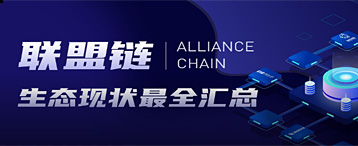-
Ethereum Price Quotes Today_eth market today_How much will Ethereum rise to?_20231227
 linkweb3
linkweb3 2023-12-27
2023-12-27 3874
3874 ETH
ETH
-
Summary:Ethereum price today's market price is /coin。What Is Ethereum (ETH)?Et
Ethereum price today's market price is /coin。

What Is Ethereum (ETH)?
Ethereum is a decentralized open-source blockchain system that features its own cryptocurrency, Ether. ETH works as a platform for numerous other cryptocurrencies, as well as for the execution of decentralized smart contracts.
Ethereum was first described in a 2013 whitepaper by Vitalik Buterin. Buterin, along with other co-founders, secured funding for the project in an online public crowd sale in the summer of 2014. The project team managed to raise $18.3 million in Bitcoin, and Ethereum’s price in the Initial Coin Offering (ICO) was 0.311, with over 60 million Ether sold. Taking Ethereum’s price now, this puts the return on investment (ROI) at an annualized rate of over 270%, essentially almost quadrupling your investment every year since the summer of 2014.
The Ethereum Foundation officially launched the blockchain on July 30, 2015, under the prototype codenamed “Frontier.” Since then, there has been several network updates — “Constantinople” on Feb. 28, 2019, “Istanbul” on Dec. 8, 2019, “Muir Glacier” on Jan. 2, 2020, “Berlin” on April 14, 2021, and most recently on Aug. 5, 2021, the “London” hard fork.
Ethereum’s own purported goal is to become a global platform for decentralized applications, allowing users from all over the world to write and run software that is resistant to censorship, downtime and fraud.
Who Are the Founders of Ethereum?
Ethereum has a total of eight co-founders — an unusually large number for a crypto project. They first met on June 7, 2014, in Zug, Switzerland.
Russian-Canadian Vitalik Buterin is perhaps the best known of the bunch. He authored the original white paper that first described Ethereum in 2013 and still works on improving the platform to this day. Prior to ETH, Buterin co-founded and wrote for the Bitcoin Magazine news website.
British programmer Gavin Wood is arguably the second most important co-founder of ETH, as he coded the first technical implementation of Ethereum in the C++ programming language, proposed Ethereum’s native programming language Solidity and was the first chief technology officer of the Ethereum Foundation. Before Ethereum, Wood was a research scientist at Microsoft. Afterward, he moved on to establish the Web3 Foundation.
Among the other co-founders of Ethereum are: - Anthony Di Iorio, who underwrote the project during its early stage of development. - Charles Hoskinson, who played the principal role in establishing the Swiss-based Ethereum Foundation and its legal framework. - Mihai Alisie, who provided assistance in establishing the Ethereum Foundation. - Joseph Lubin, a Canadian entrepreneur, who, like Di Iorio, has helped fund Ethereum during its early days, and later founded an incubator for startups based on ETH called ConsenSys. - Amir Chetrit, who helped co-found Ethereum but stepped away from it early into the development.
What Makes Ethereum Unique?
Ethereum has pioneered the concept of a blockchain smart contract platform. Smart contracts are computer programs that automatically execute the actions necessary to fulfill an agreement between several parties on the internet. They were designed to reduce the need for trusted intermediates between contractors, thus reducing transaction costs while also increasing transaction reliability.
Ethereum’s principal innovation was designing a platform that allowed it to execute smart contracts using the blockchain, which further reinforces the already existing benefits of smart contract technology. Ethereum’s blockchain was designed, according to co-founder Gavin Wood, as a sort of “one computer for the entire planet,” theoretically able to make any program more robust, censorship-resistant and less prone to fraud by running it on a globally distributed network of public nodes.
In addition to smart contracts, Ethereum’s blockchain is able to host other cryptocurrencies, called “tokens,” through the use of its ERC-20 compatibility standard. In fact, this has been the most common use for the ETH platform so far: to date, more than 280,000 ERC-20-compliant tokens have been launched. Over 40 of these make the top-100 cryptocurrencies by market capitalization, for example, USDT, LINK and BNB. Since the emergence of Play2Earn games, there has been a substantial increase in interest in the ETH to PHP price.
What is Ethereum Name Service?
Ethereum Name Service, aka ENS, is a distributed and extensible naming system based on the Ethereum blockchain. It is essentially the Web3 version of DNS, short for domain name service.
In its original state, a cryptocurrency address consists of a long string of numbers and letters designed to be read by computers. It may look like this — “0xDC25EF3F5B8A186998338A2ADA83795FBA2D695E” — making it confusing at times to read, and in some cases even leading to loss of funds.
ENS provides a solution to this problem of long and confusing crypto addresses by assigning human-readable names to machine-readable identifiers such as Ethereum addresses, metadata, other cryptocurrency addresses and content hashes. With ENS, the long address above could become something as simple as “Alice.eth,” and you can receive any type of cryptocurrency or NFT via your ENS domain.
ENS is based on two Ethereum smart contracts. The first is the ENS registry, which records three critical pieces of information: the owner of the domain, the resolver for the domain and the caching time for all records under the domain. The second smart contract is the Resolver, which translates the domain name to a machine-readable address and vice-versa.
It is worth adding that in addition to integrating with .eth names, ENS also supports the most popular DNS names, including .com, .org, .io, .app and several others.
What is an Ethereum Killer?
Since its inception, Ethereum has maintained its spot as the second-largest cryptocurrency by market capitalization. But like every other blockchain network that exists, Ethereum is not perfect. Notable, the legacy blockchain is plagued with high gas fees and low throughput of between 15 to 30 transactions per second.
Although plans are already on the way to solve these shortcomings through several upgrades, many competitors have capitalized on this delay to offer crypto users cheaper and faster transactions.
The term “Ethereum Killer” emerged around 2016/2017 as substitute blockchains such as Cardano began to enter the crypto scene. In 2018, EOS made its debut as the next “Ethereum killer,” raising $4.1 billion from investors, the highest amount an ICO had ever generated. Since then, others like Tezos, Solana, Fantom, Avalanche and Binance Smart Chain have surfaced as possible Ethereum killers.
Each of these blockchains employs a different consensus model to tackle Ethereum’s PoW-induced limitations. For instance, Solana uses proof-of-history (PoH) while Binance Smart Chain utilizes both proof-of-authority (PoA) and delegated proof-of-stake (DPoS).
However, none of these alternative blockchains have been able to unseat Ethereum as the second-largest cryptocurrency by market cap. Ethereum is also currently the largest blockchain for NFT trading activities.
Ethereum London Hard Fork
The Ethereum network has been plagued with high transaction fees, often spiking at seasons of high demand. In May 2021, the average transaction fee of the network peaked at $71.72.
In addition to the high cost of transactions, the leading altcoin also suffers from scalability issues.
As already mentioned, there are plans to transition to a proof-of-stake algorithm in order to boost the platform’s scalability and add a number of new features. The development team has already begun the transition process to ETH 2.0, implementing some upgrades along the way, including the London hard fork.
The London upgrade went live in August 2021. It included five Ethereum Improvement Proposals (EIPs), namely EIP-3529, EIP-3198, EIP-3541, and most notably EIP-1559 and EIP-3554.
EIP-1559 is arguably the most popular upgrade out of all the EIPs.
What Is EIP-1559?
The EIP-1559 upgrade introduces a mechanism that changes the way gas fees are estimated on the Ethereum blockchain. Before the upgrade, users had to participate in an open auction for their transactions to be picked up by a miner. This process is known as a “first-price auction,” and as expected, the highest bidder wins.
With EIP-1559, this process is handled by an automated bidding system, and there is a set “base fee” for transactions to be included in the next block. This fee varies based on how congested the network is. Furthermore, users who wish to speed up their transactions can pay a “priority fee” to a miner for faster inclusion.
EIP-1559 also introduces a fee-burning mechanism. A part of every transaction fee (the base fee) is burned and removed out of circulation. This is intended to lower the circulating supply of Ether and potentially increase the value of the token over time.
Interestingly, less than two months after the London upgrade was implemented, the network had burned over billion worth of Ether.
Ethereum 2.0
In 2022, Ethereum plans to switch to proof-of-stake with its Ethereum 2.0 update. This switch has been in the Ethereum roadmap since the network's inception and would see a new consensus mechanism, as well as introduce sharding as a scaling solution. The current Ethereum chain will become the Beacon Chain and serve as a settlement layer for smart contract interactions on other chains.
In late 2021, Ethereum's Arrow Glacier update was delayed to June 2022. Until then, Vitalik Buterin expects the road to the network's endgame to be shaped by optimistic rollups and Zk-rollups.
In January 2022, the Ethereum Foundation announced the decision to remove the “Ethereum 2.0” terminology to “save all future users from navigating this confusing mental model.” It went on to explain that the previously-referred-to terms of “Ethereum 1.0” would be branded the “execution layer,” while “Ethereum 2.0” will be called the “consensus layer”. This is ultimately to provide a more accurate version of the Ethereum roadmap.
In an update on the progress of the Merge, on April 13, 2022, Ethereum developer Tim Beiko tweeted an update on the progress of the Merge, stating that they are “definitely in the final chapter of PoW on Ethereum.” He also mentioned that users can expect it to occur a few months after June, although no exact date was provided. This came on the back of the first mainnet shadow fork — to test the transition to PoS on Ethereum — that was successfully implemented on April 11, 2022.
The Ethereum Merge
In 2022, Ethereum renamed its transition from proof-of-work to proof-of-stake from Ethereum 2.0 to The Merge. The Merge is scheduled to go ahead on Sept. 15, 2022, with the merge of the Goerli testnet successfully completed on Aug. 11, 2022.
The Merge implements several critical changes to Ethereum. First, it merges the existing PoW Ethereum mainnet with the Beacon Chain, a PoS chain. Together, the two chains will form the new proof-of-stake Ethereum, which will consist of a consensus layer and an execution layer. The consensus layer will synchronize the chain state across the network, while the execution layer handles transactions and block production.
Second, the Merge significantly reduces ETH issuance. This has been dubbed the "triple halving" in a nod to the Bitcoin halving, since the Merge reduces ETH issuance by 90%. With more than 14M ETH already staked, ETH could very well become deflationary after the transition. Furthermore, stakers are expected to earn between 8% and 12% APR at current projections. Staked ETH will not be withdrawable immediately after the Merge — it will only be enabled after the Shanghai upgrade, estimated to be 6 to 12 months later.
Learn more about the common misconceptions of Ethereum post-Merge.
The Merge will not increase transaction throughput or reduce gas fees, as the block production rate stays roughly the same at 12 seconds (currently 13 seconds). It will also not enable on-chain governance, with protocol changes still discussed and decided off-chain through stakeholders.
Importantly, the transition to PoS is expected to reduce Ethereum's annual energy consumption from 112 TWh/yr to only 0.01 TWh/yr — a 99.9% drop. This reduction prompted investors to expect an influx of institutional money in a "greener" Ethereum. On the flip side, Ethereum miners, in an industry estimated to be worth $19 billion, seek to champion ETHPoW, a potential hard fork of Ethereum on proof-of-work. We explain the main differences in our ETH PoS vs ETH PoW article.
How Many Ethereum (ETH) Coins Are There In Circulation?
In September 2021, there were around 117.5 million ETH coins in circulation, 72 million of which were issued in the genesis block — the first ever block on the Ethereum blockchain. Of these 72 million, 60 million were allocated to the initial contributors to the 2014 crowd sale that funded the project, and 12 million were given to the development fund.
The remaining amount has been issued in the form of block rewards to the miners on the Ethereum network. The original reward in 2015 was 5 ETH per block, which later went down to 3 ETH in late 2017 and then to 2 ETH in early 2019. The average time it takes to mine an Ethereum block is around 13-15 seconds.
In the August 2021 Ethereum network upgrade, the London hard fork contained the Ethereum Improvement Protocol, EIP-1559. Instead of the first-price auction mechanism where the highest bidder wins, EIP-1559 introduces a “base fee” for transactions to be included in the next block. Users that want to have their transaction prioritized can pay a “tip” or “priority fee” to miners. As the base fee adjusts dynamically with transaction activity, this reduces the volatility of Ethereum gas fees, although it does not reduce the price, which is notoriously high during peak congestion on the network.
One of the major differences between Bitcoin and Ethereum’s economics is that the latter is not deflationary, i.e. its total supply is not limited. Ethereum’s developers justify this by not wanting to have a “fixed security budget” for the network. Being able to adjust ETH’s issuance rate via consensus allows the network to maintain the minimum issuance needed for adequate security.
With the introduction of EIP-1559 however, the base fees used in transactions are burned, removing the ETH from circulation. This means higher activity on the network would lead to more ETH burned, and the decreasing supply should lead to appreciation of Ethereum price, all things equal. This has the potential to make Ethereum deflationary, something ETH holders are excited about — a potential appreciation in Ethereum price today.
How Is the Ethereum Network Secured?
As of August 2020, Ethereum is secured via the Ethash proof-of-work algorithm, belonging to the Keccak family of hash functions.
There are plans, however, to transition the network to a proof-of-stake algorithm tied to the major Ethereum 2.0 update, which launched in late 2020.
After the Ethereum 2.0 Beacon Chain (Phase 0) went live in the beginning of December 2020, it became possible to begin staking on the Ethereum 2.0 network. An Ethereum stake is when you deposit ETH (32 ETH is required to activate validator software) on Ethereum 2.0 by sending it to a deposit contract, thus helping to secure the network by storing data, processing transactions and adding new blocks to the blockchain. At the time of writing in mid-September 2021, the Ethereum price now for 32 Ether is roughly $116,029. The amount of money earned by Ethereum validators right now is a return of 6% APR, which equates to around 1.91952 ETH, or $6960 in Ethereum price today. This number will change as the network develops and the amount of stakers (validators) increase.
Ethereum staking rewards are determined by a distribution curve (the participation and average percent of stakers): some ETH 2.0 staking rewards were at 20% for early stakers, but will be lowered to end up between 7% and 4.5% annually.
The minimum requirements for an Ethereum stake are 32 ETH. If you decide to stake in Ethereum 2.0, it means that your Ethererum stake will be locked up on the network for months, if not years, in the future until the Ethereum 2.0 upgrade is completed.
Where Can You Buy Ethereum (ETH)?
Given the fact that Ethereum is the second-largest cryptocurrency after Bitcoin, it is possible to buy Ethereum, or use ETH trading pairs on nearly all of the major crypto exchanges. Some of the largest markets include:
Binance、Coinbase Pro、OKEx、Kraken、Huobi Global
Popular Ethereum price pairs include: ETH/USD, ETH/GBP, ETH/AUD and ETH/JPY.
Ethereum trading platform

1. OKEx Exchange: the exchange with the largest number of "big players" in the digital currency market and virtual currency
OKEx, as the exchange with the largest number of large players in the currency market, is also the first to open contract trading among the three major exchanges, and it is still gradually aligning with the contract position during development. In the past, 2020 was called the contract year, and the OKEx exchange also took advantage of the momentum to launch many contract games. OKex’s contracts are famous for their high multiples and small flat shares, attracting a large number of contract players, and the market viscosity is extremely high. If things go on like this, OKEx will become the direction mark of the currency contract.
2. Huobi Exchange: the exchange with the most "retail investors" in the currency market
According to relevant data analysis, Huobi Exchange can basically be said to be the exchange with the largest number of digital currency retail investors in the currency market. As a veteran exchange established in 2013, Huobi still has many loyal fans. Moreover, in all fairness, Huobi has successfully captured the requirements of most retail investors, and most of them have achieved deep-level best in terms of "spot buying currency" and "spot market".
3. Coinbase (USA): the exchange with the highest level of internationalization
Coinbase is the world's largest digital currency exchange. As of December 31, 2020, Coinbase's encrypted currency transaction volume was 193 billion US dollars, an increase of 141.7% over 2019, with a compound growth rate of 258%, accounting for 11.1% of the total market share. Financial data for the first quarter of 2021, of which the total revenue is about 1.8 billion US dollars, an increase of over 844% year-on-year
4. BitMEX (Hong Kong, China)
BitMEX buys and sells Bitcoin and other digital currency contracts, reaching 100 times leverage. Fast implementation, low cost, complete functions, and flexible transactions.
5. ZB (ZB)
ZB is a global data currency exchange. It has obtained the exchange license plates of Thailand and Dubai. The operation team has 4 years of experience in the blockchain field. The company's employees are located in China, the United States, Thailand, South Korea, Canada, Dubai and other places. . There are many currencies, suitable for computers and mobile phones, convenient registration, suitable for RMB; in addition, ZB has acquired a two-letter com domain name, which shows that it has certain economic strength.
6. Bitfinex
Bitfinex is one of the largest bitcoin trading platforms in the world. It is suitable for the trading of digital currencies such as Ethereum, Bitcoin, and Ethereum. The daily transaction volume reaches more than 3 billion RMB, and it is suitable for information currency transactions of US dollars and yuan online recharge. It is also one of the most frequently stolen Bitcoin trading centers. Trading pairs: 175 my country: Hong Kong Trading volume (24h): 8,997,430 Applicable: spot futures.
7.Gate.io
Gate.io is the former Bitcoin foreign data currency exchange, headquartered in Hong Kong, China. Since the announcement of the c2cRMB online recharge method on the gate.io platform in 2017, the transaction volume has soared. It is currently a popular digital currency trading platform for Chinese customers' fiat currency transactions, and supports fixed investment funds, loans, and 100-fold leverage contracts. Trading pairs: 292 my country: Hong Kong Trading volume (24h): ?7,272,210 Applicable: currency spot futures.
8.Coinbase
Coinbase is the first bitcoin exchange in the UK with a reliable license plate. In 2018, it was approved by the US government (SEC and FINRA) to issue the total license plate for trading securities and currencies! Coinbase is one of the most well-known digital currency exchanges in the world! Trading pairs: 4 my country: UK trading volume (24h): ?454,980 Applicable: spot market.
9. MXC Matcha Exchange
MXC (Uji Matcha) trading market is a digital currency trading platform dedicated to the communication and exchange of blockchain technology assets. MXC provides customers with blockchain asset circulation services such as coins, loans, contracts, financial investment, etc., mainly including Bitcoin (BTC), Ethereum (ETH), and other virtual currency markets. Trading pairs: 197 my country: Malaysia Trading volume (24h): ?6,074,440 Applicable: currency spot market.
10. AOFEX
AOFEX is located in London, and its Asian headquarter is located in Malaysia. It is the world's leading security digital currency service platform. It has obtained the UK MSB data currency transaction license plate and the Malaysian MAS service project exemption. AOFEX has always adhered to the value concept of "customer first, honesty, friendliness and reliability, technological innovation and tolerance, and cooperation". Persevere in the corporate mission of "becoming a well-known digital financial investment platform and providing services for 10 million investors and qualified investors".
The above is the detailed content of Ethereum price today, the latest news of Ethereum, and the value of Ethereum. I hope it will be helpful to you!
Disclaimer:As an open information publishing platform, shilian only represents the author's personal views and has nothing to do with shilian. If the article, picture, audio or video contains infringement, violation or other inappropriate remarks, please provide relevant materials and send it to: 2785592653@qq.com.
Hint:The information provided on this site does not represent any investment suggestion. Investment is risky, and you must be cautious when entering the market.
ShilianFan group:Provide the latest hot news, airdrop candy, red envelopes and other benefits, WeChat: rtt4322.
















